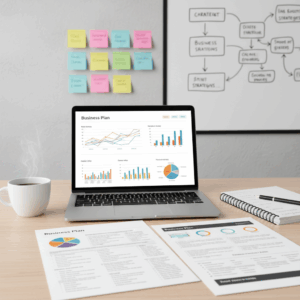Definition and measurement of labor productivity
The labor productivity It is a key indicator that measures the efficiency in the use of labor to generate goods and services.
This concept reflects the amount produced per unit of labor, whether in hours worked or number of employees, and is directly linked to economic growth.
Concept of labor productivity
Labor productivity refers to the ability to generate more results with the same or less amount of work, optimizing resources and time.
It is essential for evaluating the quality of work and efficiency in production processes that impact sustainable economic development.
This concept allows us to understand how human capital contributes to the increase in the Gross Domestic Product (GDP) and economic improvement.
Methods for measuring productivity
Labor productivity can be measured by calculating the ratio of total output to hours worked or the number of employees.
Indicators are also used to analyze resource efficiency, helping to identify areas for improvement in the production process.
Accurate measurement is essential to fostering strategies that drive innovation and increase business and economic profitability.
Impact of labor productivity on the economy
The labor productivity It is an essential engine for economic growth, as it increases the productive capacity of a nation's workforce.
This translates into improved resource efficiency and work quality, essential elements for sustainable economic development.
Relationship between productivity and economic growth
Labor productivity drives economic growth by increasing the output generated per worker or per hour worked.
This increase allows the Gross Domestic Product (GDP) to grow without the need to increase employment, improving national competitiveness.
Furthermore, productivity fosters innovation and the efficient use of resources, key aspects of long-term economic progress.
Effects on income and quality of life
When productivity increases, workers can enjoy higher incomes in less time, improving their quality of life.
This contributes to a virtuous circle where a better standard of living encourages greater motivation and commitment to work.
Furthermore, high levels of productivity promote investments in health, education, and welfare, which are essential for social well-being.
Influence on wages and working conditions
Increased productivity often translates into higher wages, as companies have greater margins to compensate their employees.
It can also generate better working conditions, fostering innovative and safe work environments, which increases efficiency.
These improvements motivate the workforce and foster engagement, further boosting productivity and business development.
Labor productivity and business development
The labor productivity It is key for companies to optimize the use of their resources and achieve greater profitability in their daily operations.
By improving productivity, companies can reduce costs, increase profits, and ensure sustained growth in a competitive market.
Optimization of resources and profitability
Optimizing resources means maximizing output with the least amount of input possible, which increases efficiency and reduces unnecessary expenses.
Greater productivity allows companies to achieve more results with the same resources, increasing profitability and boosting growth.
This translates into a better allocation of human, technological, and financial capital, generating a virtuous cycle of business improvement and expansion.
Business competitiveness and sustainability
Labor productivity is essential for companies to maintain their competitiveness in the face of market changes and globalization.
Furthermore, high productivity promotes sustainability, as it allows us to operate responsibly, efficiently, and with a lower environmental impact.
Thus, organizations that boost productivity are better able to adapt and ensure their long-term success by preserving resources and talent.
Factors that drive productivity
The factors that drive the labor productivity They are essential to optimize performance and improve business and economic competitiveness.
Process efficiency and technological innovation are fundamental pillars for achieving sustainable development and continuous growth.
Efficiency in production processes
Efficiency refers to achieving products or services with the least possible use of resources, reducing waste and production times.
To increase efficiency, companies implement methods such as continuous improvement, process management, and error reduction, thereby increasing their productivity.
Furthermore, greater efficiency allows for optimizing costs and time, which translates into greater profitability and better conditions for workers.
Innovation and technological development
Innovation boosts productivity by incorporating new technologies that facilitate automation and improve product or service quality.
Technological development transforms processes, allowing organizations to quickly adapt to changes and maintain their competitiveness in the market.
Investing in innovation also fosters a dynamic and motivating work environment that enhances talent and fosters creativity among employees.






